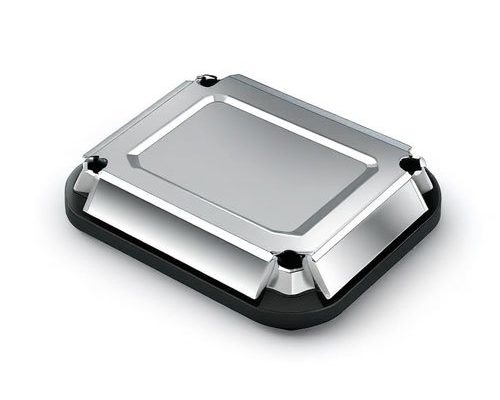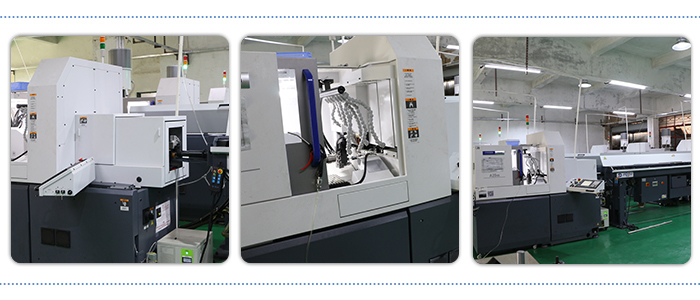Learn how surface treatments impact dimensional tolerances in CNC machining. Explore common issues, solutions, and the benefits of precise surface finishing.
CNC machining is all about precision, but did you know that even the surface treatment of a part can have a significant impact on its dimensional tolerances? As a seasoned professional in the CNC machining industry, I often come across the question of how surface finishing techniques—whether it’s anodizing, plating, or polishing—affect the accuracy and dimensions of machined parts.
In this article, I’ll delve into the relationship between surface treatments and dimensional tolerances in CNC machining. I’ll explain why it’s essential to understand this connection and how to mitigate potential issues. We’ll also explore some practical solutions and benefits that come from controlling surface finish processes, and why getting it right matters for the performance and quality of your parts.
1. What is Surface Treatment in CNC Machining?
Before diving into the specifics of how surface treatments impact dimensional tolerances, let’s first understand what surface treatments are in the context of CNC machining.
Surface treatment refers to any process applied to the surface of a material to enhance its properties—whether it’s improving wear resistance, increasing corrosion resistance, or achieving a specific appearance. These treatments can include a variety of techniques like:
- Anodizing: Used primarily for aluminum, this process increases corrosion resistance and surface hardness.
- Plating: Involves applying a thin metal coating (e.g., chrome, nickel) to the part’s surface for protection or aesthetic appeal.
- Powder Coating: A dry finishing process that provides a hard, durable layer over the part.
- Polishing: Achieving a shiny and smooth surface by grinding or buffing.
- Hardening: Making the material harder through heat treatment processes.
While these treatments offer valuable benefits like enhancing durability and appearance, they also alter the surface geometry of the part, which can, in turn, affect the dimensional tolerances—that is, how accurately the part fits within its specified dimensions.
2. How Do Surface Treatments Affect Dimensional Tolerances?
Surface treatments can alter the size, shape, and overall finish of a part. These alterations may seem minor, but in the world of precision CNC machining, even the smallest variation can lead to significant issues, especially when working with tight tolerances.
Here are some of the ways surface treatments influence dimensional tolerances:
1. Material Build-Up
Most surface treatments, such as plating, anodizing, or coating, involve adding a layer to the part’s surface. This additional layer can cause the final dimensions of the part to change slightly.
- Example: If a part is anodized, the aluminum oxide coating can build up to a thickness of around 0.002 to 0.005 inches. This can change the outer dimensions of the part, potentially making it slightly larger than its original size.
Impact on tolerances: If your design relies on precise measurements, this additional layer can push the part out of tolerance, especially when dealing with tight fits or critical functions.
2. Warping and Distortion
Certain surface treatments, like heat treatment or hardening, can cause parts to warp or distort due to thermal expansion and contraction. The heat treatment process can lead to internal stresses within the material, which may result in dimensional changes after cooling.
- Example: A part that undergoes induction hardening could warp due to uneven heating and cooling, causing changes in its flatness or roundness.
Impact on tolerances: Warping and distortion can lead to a part no longer fitting properly in its intended assembly, causing functional and dimensional issues. These problems can become even more pronounced in parts with complex geometries.
3. Surface Texture and Roughness
The surface texture of a part can also be influenced by the surface treatment process. For instance, polishing and grinding processes can smooth out the surface but may also slightly alter the part’s dimensions due to material removal.
- Example: After polishing, the part may lose a fraction of its thickness due to the abrasive process, which can affect tight tolerances, especially if the polished surface needs to fit into another component.
Impact on tolerances: While surface polishing can improve appearance and reduce friction, it can also reduce the overall dimensions of the part slightly, potentially impacting fit and function.
4. Variability in Coating Thickness
Coating processes, like powder coating or electroplating, often have variations in coating thickness. These variations can result in parts being either too thick or too thin, leading to dimensional inconsistencies.
- Example: In chrome plating, the plating process may deposit a thinner layer on the edges of the part compared to the central areas, causing uneven thickness and potential changes in overall dimensions.
Impact on tolerances: Variability in coating thickness can lead to parts that are out of tolerance, especially if the dimensions were already tight before the coating was applied.
3. How to Address the Challenges of Surface Treatment on Dimensional Tolerances?
As you can see, surface treatments can influence dimensional accuracy in various ways. But don’t worry—there are ways to manage these challenges and ensure your parts meet the required specifications.
1. Accurate Pre-Treatment Measurement and Planning
Before applying any surface treatment, it’s crucial to account for the thickness and potential dimensional shifts caused by the treatment. This can be done by:
- Measuring the part’s dimensions before the treatment process.
- Consulting with your surface treatment provider to understand the expected layer thickness and any distortion that might occur.
- Allowing extra material in critical areas to compensate for the change in size after treatment.
2. Tight Tolerances Post-Treatment
Sometimes, it’s necessary to perform post-treatment machining to ensure the part remains within its tolerances. After the surface treatment process is completed, it’s often helpful to perform:
- Final machining or grinding to remove any excess material or correct for dimensional changes.
- Precision measuring to confirm that the part is within tolerance.
3. Specialized Coatings and Processes
If dimensional tolerance is critical, consider using specialized coatings that have minimal impact on part dimensions. Some thin coatings (such as PVD coatings) have a much smaller impact on the overall size, helping maintain tighter tolerances.
4. Quality Control and Testing
Quality control plays a crucial role in ensuring that the parts meet the required tolerances after surface treatments. Using advanced tools like CMM (coordinate measuring machines) and profilometers can help measure the impact of the surface treatment on the final part dimensions and ensure everything is within spec.
4. What Are the Benefits of Managing Surface Treatment and Dimensional Tolerances?
Effectively managing surface treatments and their impact on dimensional tolerances brings several key benefits to your CNC machining operations:
1. Improved Functionality and Performance
By ensuring that surface treatments don’t negatively affect the dimensions of critical features, you improve the overall functionality and performance of the part. Tight tolerances are often required for parts that need to fit precisely or work in a high-performance environment (e.g., aerospace, automotive).
2. Increased Durability and Corrosion Resistance
Surface treatments like anodizing or coating enhance the part’s resistance to corrosion and wear. By ensuring that these treatments are applied without altering critical dimensions, you can achieve the best of both worlds: high performance and long-lasting durability.
3. Cost and Time Savings
When surface treatment and dimensional tolerances are well-managed, the need for rework and part rejection is minimized. This results in lower production costs, fewer delays, and more efficient manufacturing processes.
5. Related Questions:
What surface treatment is best for CNC machined parts?
The best surface treatment depends on the part’s intended use. For example, anodizing works well for aluminum parts requiring corrosion resistance, while chrome plating is ideal for improving wear resistance.
How do you measure dimensional tolerances in CNC machining?
Dimensional tolerances are typically measured using precision instruments such as CMMs (coordinate measuring machines), calipers, or micrometers. These tools ensure the final part meets the required specifications.
What is the ideal surface finish for CNC parts?
The ideal surface finish depends on the function of the part. For high-performance parts, a smooth finish with low roughness (Ra) is crucial. For aesthetic parts, a polished or brushed finish may be preferred.
6. Why Choose YL-Machining for Your CNC Machining Needs?
At YL-Machining, we specialize in providing high-precision CNC machining services that include accurate surface treatments. We understand that surface finish and dimensional tolerances go hand in hand, and we take the necessary steps to ensure that both are perfectly aligned to meet your exact requirements.
Whether you need anodizing, plating, polishing, or any other surface treatment, we work closely with our customers to ensure that every part is crafted to perfection. Our quality control processes guarantee that you get the best results, every time. Visit us at YL-Machining to learn how we can help you with your CNC machining and surface treatment needs.



